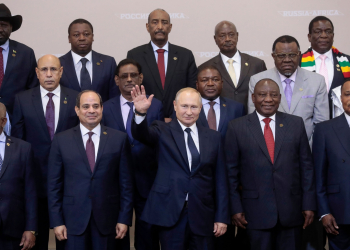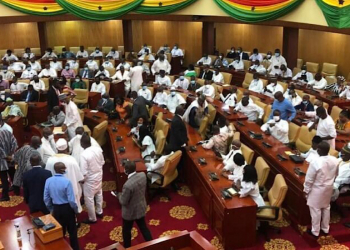The Ghana National Petroleum Company (GNPC) has denied allegations made by the Public Interest and Accountability Committee (PIAC) that oil revenues were understated in 2016, arguing that, monitoring mechanisms in place are strong enough to prevent revenue leakage.
PIAC in its analysis of the performance of the country’s petroleum sector for 2016, said that revenue margins for the period indicated could have been much higher if there were enough personnel from the Ghana Revenue Authority (GRA) at the various oil fields to monitor processes and happenings.
Dr. Kofi Kodua Sarpong, the Chief Executive Officer of GNPC, has however, debunked the claims. “I don’t think oil revenues were understated. I have been on FPSO Agyekum Kufuor. As it is structured, there is a Custom’s person there. I have not seen anything about the integrity of the system being compromised.
These are all speculations. We need to verify facts rather than speculating about things. I personally believe, from what I have observed from the FPSO Agyekum Kufuor, there is nothing to worry about,” he said at an event held to commemorate a decade of oil discovery in Ghana.
The Acting CEO of Petroleum Commission, Theophilus Ahwireng, also noted that understating oil revenue is “unlikely” given the systems in place but the Commission is open to investigating the issue.
“I will be surprised for that to happen. Because we have what we call the physical metres which measures everything and so we will investigate that issue raised,” he said.
Oil production dipped by about 13.7percent in 2016, from 37.41million barrels in 2015 to 32.30 million barrels, in spite of the coming of stream of the TEN field in August 2016 to augment production at jubilee.
In its 2016 annual report, released last week, the Public Interest and Accountability Committee (PIAC), which has the mandate to monitor and report on petroleum receipts and how they are spent, said the shortfall could have been up to 28percent but for the TEN field.
Annual receipts in 2016 totaled US$247.18million, lower than the budgeted US348.42 million, as a result of the decline in production, which is blamed on the challenges encountered with the turret bearing at FPSO Kwame Nkrumah, as well as low oil prices.
The figure represents a 38percent year-on-year decline compared to the US$ 396.17 received in 2015, PIAC said, adding that except for Corporate Income Tax (CIT), none of the other sources of petroleum revenues achieved set targets.
Ninety-two percent of total CIT or US$27.31million was in respect of tax liabilities that Tullow ought to have paid over the period 2011 to 2014, PIAC said.
A total of US229.03 million, representing approximately 93percent of total petroleum receipts, was allocated during the reporting period.
An amount of US$98.38million, representing 70percent of the net amount of US140.54million transferred to the Government of Ghana for further distribution was transferred to the Annual Budget Funding Amount in 2016.
The remaining US$42.16 million was transferred to the Ghana Petroleum Funds, with the Ghana Stabilisation Fund receiving US29.51million or 70percent and the Ghana Heritage Fund receiving US$12.65million.
Oil was discovered in the Jubilee field, offshore Cape Three Points, in the Western Region in 2007. Large net pays of 95m and 41m respectively was discovered in high-quality stacked reservoir sands in Mahogany-1 and Hyedua-1 wells respectively.
The Sankofa field was also discovered in September 2009, with the drilling of the Sankofa-1 well in a water depth of 866m and to a total depth of 3,704m. It encountered high-quality reservoir sands containing 36m of net oil and gas. The well is situated approximately 35km east of the Jubilee fields.
The field was further appraised in April 2011 by drilling the Sankofa-2 well at a water depth of 864m. It flowed 29.5Mmscfd of high-quality gas and 1,000boepd of 52 API condensate during test. It confirmed the presence of 35m net gas and condensate sands of the Cretaceous age. The Gye Nyame field was discovered in July 2011 by drilling the Gye Nyame 1 well.
The well was drilled to a total depth of 3,349m at a water depth of 519m and encountered significantly thick gas and condensate sands. The field is located 16km east of the Sankofa field. The Sankofa East field was discovered by drilling the Sankofa East-1X well in September 2012. The well was drilled to a total depth of 3,650m in 825m of water, and encountered 28m of gas and condensate and 76m of gross oil pay in cretaceous sandstones. It produced about 5,000 barrels of high-quality oil a day during test.
The Sankofa East 2A well, the first appraisal well of the Sankofa East, was drilled in January 2013 to confirm the extension of the oil accumulation in the Cenomanian sequence. It was drilled to a total depth of 4,050m in water depth of 990m and encountered 23m of gas and 17m of net gas, as well as 32m of net oil in cretaceous sands.
Tweneboa, Enyenra and Ntomme (TEN) oil and gas field was also discovered in 2009.
The field has reserves of 240 million barrels of oil and a deposit of 335 million standard cubic feet of gas. The TEN field which is west of the Jubilee Field is operated by Tullow.
Sign up for GhanaStar.com to receive daily email alerts of breaking news in Ghana. GhanaStar.com is your source for all Ghana News. Get the latest Ghana news, breaking news, sports, politics, entertainment and more about Ghana, Africa and beyond.




